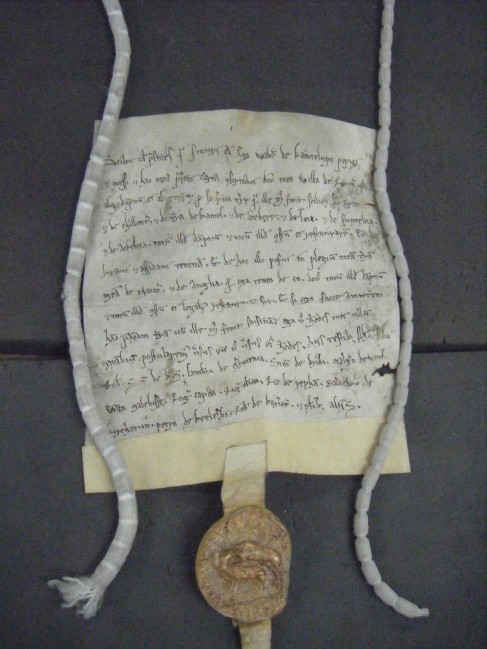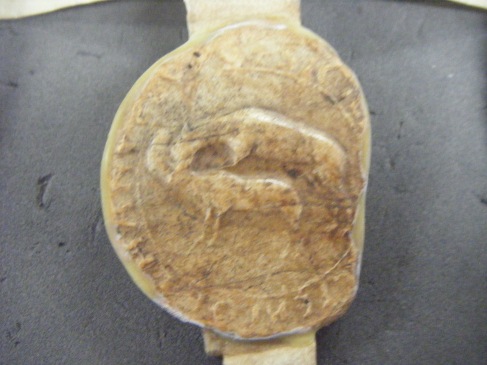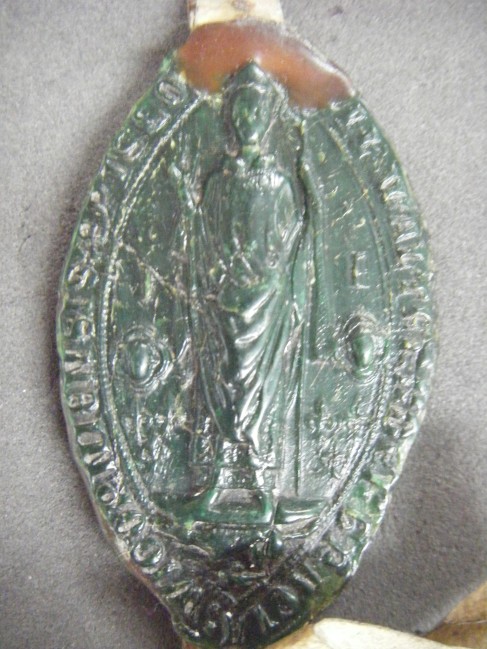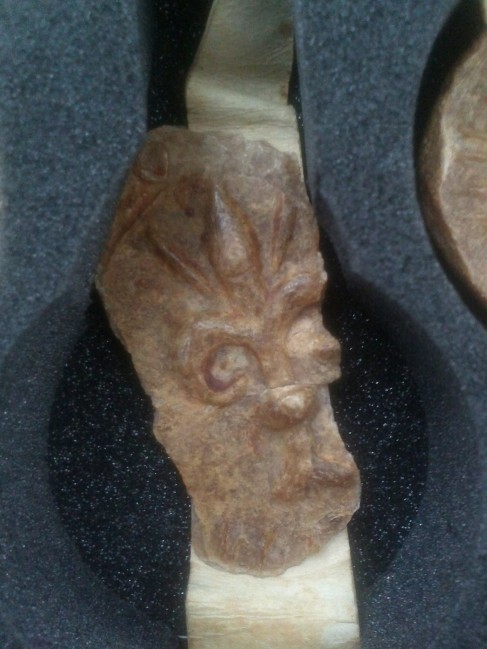Ok. I have a charter here which I’m trying to transcribe. 
If you’re familiar with charters, skip this little bit. Someone asked about them, so here goes!
– – A charter is usually a gift of land (but could include other stuff) to another party.
– – It starts with the greetings clause, usually, like the one above, “Know all you present and future people that I, [name] …” then gets to the meaty bit (what is being given, the terms of the gift and so on) and then has a date clause (not always!) and a witness list at the end.
This Bad Boy ^^
This one doesn’t have a dating clause, but it’s been dated using internal evidence. Walter died around 1200 so it can’t be later than that. William de Roumare, to whom it’s addressed, is probably William III de Roumare, the son of the first Earl of Lincoln. He never held the earldom but is often styled ‘earl’ [comes]. There’s no comes here, he’s just called ‘my lord’ [domino meo – the domino is contracted to dono]. He was a major landowner even though he wasn’t technically an earl, and Walter de Cantilupe evidently owed him service. This William de Roumare died before 1198 according to his father’s Oxford Dictionary of National Biography entry. If you’re not a subscriber, here’s the wikisource link: http://en.wikisource.org/wiki/Roumare,_William_de_%28DNB00%29.
There’s another charter addressed to William de Roumare and dated internally to 1198. So. Make of that what you will.
What’s interesting about this is that (a) Walter is talking about damage to lands/property which occurred “during the war”, and (b) the seal at the bottom.
There are several ‘wars’ that might fit… Many thanks to Gideon Brough and his prompt facebook response! He let me know that:
Henry II fighting the Welsh from c. 1157 onwards: took a proper Welsh-style thrashing from Owain Gwynedd in 1157 and 1165, Deheubarth revolted in 1163. Doubtless recruited from among his nobles all over England for those. Likewise brief border scuffles in Normandy with Louis VII early 1160s (obviously involved Normans), and in 1166 he sloped off to depose Conan IV in Bretagne and there was fighting 1166-8, This DEFINITELY involved Norman subjects and landholders. This conflict was brought to treaty in Jan 1169. No war anywhere until 1173, when the young Henry chances his arm., So, 3 possible candidates within Henry II’s reign. Richard I’s wars in France and Crusade thereafter. Hope that helps?
My money’s on either the Young King’s rebellion in the 1170s or Dickie. Not the Crusade… the French wars.
I’m wondering what Walter did over in France. His son William was one of Prince John’s household knights when John was Count of Mortain, and so was Walter’s brother Fulk. Now I just need to work out which lands are named and where they are!….I’ll get to that a bit later.
What really intrigues me about this is Walter’s seal.
This is Walter de Cantilupe’s personal seal. It’s a wolf with a sheep in its mouth, the wolf being a play on his name ‘Cantilupe’ from chanti loup, the singing wolves, the name given to the place of the family’s origins. The legend around it is fragmented and worn, but it just says +SIGILLVMW[.]LTERIDECHANTELVPO. It’s made of wax, and has a diameter of 50mm.
Walter chose quite an aggressive but ultimately rustic symbol with which to represent himself. Why did he pick that? Why not just a wolf on its own? There’s a bit of symbolism going on here, I suspect. What’s interesting is that his son and grandson both became bishops, and both included the wolf symbol in their personal seals – subjugating the beast under their feet.
This seal [PRO: E 329-371] is Walter’s son’s personal seal. Imaginatively, he is also called Walter. Walter (II) de Cantilupe was the bishop of Worcester from 1236 to 1266. The seal shows him in his bishop’s mitre and robes, raising his hand in blessing. The strange looking thing under his feet is, I promise, a wolf. You’ll notice the fleur-de-lys either side of him too. This is an allusion to the Cantilupe arms, which were three fleur-de-lys and varied in style across the generations.
Walter (I)’s oldest son William, Bishop Walter’s big brother, changed his personal seal completely. Once John came to power, William was perfectly placed to score one of the top jobs. To reflect the fact that he was now in a more sophisticated circle, i.e. the royal court, his seal adopted the more elegant fleur-de-lys.
The above partial seal is in the National Library of Wales, part of the Penrice and Margam charter collection [NLW PM_2050]. You can see the difference between the father’s wolf seal and the son’s seeded flower of the lily.
My thesis partly explores this transition of projected identities, and I’ll be letting you know if I update my academia.edu profile with a paper on it. Otherwise, wait for the article/book!!
This is really just a bit of a ramble through one charter – my initial thoughts and comparisons. As I transcribe and translate, I’ll keep you posted!
Any ideas about medieval identities or questions? Comment!





I am really curious about the last seal you show here . Could you give a description, please?
It’s fragmented and the only e.g. I have of this one so far. The National Library description is: Round, 1½ in. diam., a seeded fleur – de – lis.
…. LM ……… LO. That’s probably WILLELM CANTLO or SIGILLM WILLELVM DE CAUNTLO or some such. “Cantilupe” has around 10(+) spelling variants. When I go back to the National Archives in Kew and the British Library I shall see if I can find another e.g. that’s better preserved.